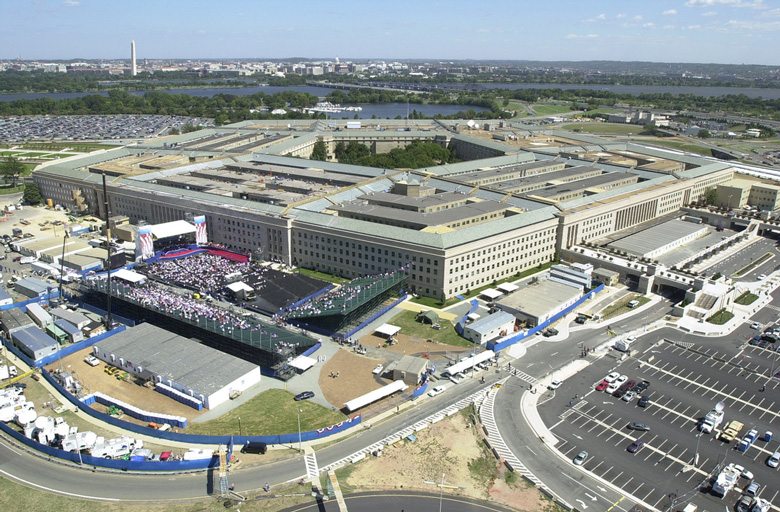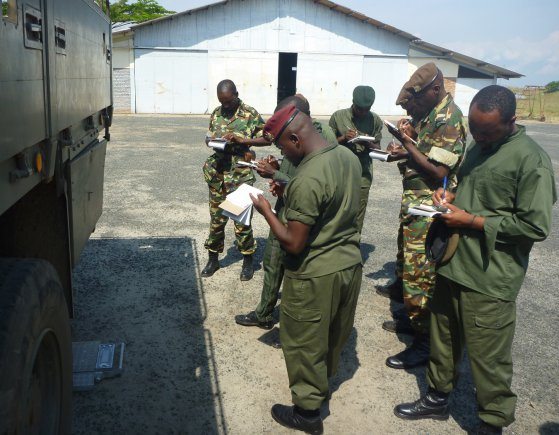The U.S. military faces a readiness crisis. A recent Congressional hearing generated headlines about the Navy’s surface fleet falling into disrepair. But that was news four years ago. Across all the services, long-standing readiness problems are worsening; breakdowns are happening more frequently.
Several years ago, an Air Force F-15C literally broke in half during flight. Since then, two F-18s have caught fire aboard ships. Today, every single cruiser hull has cracks; A-10C Warthogs have fuselage cracks, and the UH-1N Twin Huey helicopter fleet is regularly grounded. Over half the Navy’s deployed aircraft are not ready for combat. This is just a sample of the readiness problems plaguing those who serve in uniform. U.S. forces and their military commanders are putting on a brave face. But it’s beyond irresponsible for Congress and the Obama administration to not provide the resources needed to address the problems immediately.
After a decade of constant combat and ever-increasing disaster relief and homeland defense missions, readiness among all U.S. military services — National Guard and Reserves included — is dangerously lower. Symptoms included delayed, shortened, and less diverse training; plugging personnel and equipment shortfalls in deploying units with resources from others; reduced maintenance for worn-out equipment; and shortened rest time before redeploying overseas.
But is Washington listening?
In April, the engine of an F/A-18C Hornet caught fire aboard the USS Carl Vinson. In March, the engine exploded on a Marine Hornet about to take off from the USS John C. Stennis. As these aging fighter aircraft burst into flames, senior defense officials were telling policymakers that keeping the older F/A-18s in safe flying condition was “one of their most serious challenges.” Built in the 1980s and 1990s, the jets were designed to fly for 6,000 hours. But delayed delivery of the replacement F-35 Joint Strike Fighter has forced the services to try and squeeze 10,000 flight hours out of the Hornets.
Today’s Navy is experiencing extreme levels of stress. While the fleet has shrunk by about 15 percent since 1998, the number of ships deployed overseas has remained constant at about 100. Each ship goes to sea longer and more often, resulting in problems such as the well-publicized shortfalls in surface ship condition. With no surge capacity left in the fleet, each new casualty ripples through the schedules of dozens of ships. With the end of supplemental funding, Navy maintenance funding will be cut by almost 20 percent this year. In this context, a relatively small additional reduction in maintenance funding could render a Navy with 250 to 280 ships capable of keeping only 50 to 60 ships at sea.
A House Armed Services Readiness Subcommittee hearing last week again highlighted the fragile state of equipment and availability rates in the Navy. The state of surface fleet readiness in particular is bleak, two admirals told lawmakers: Over the past five years and beyond, Navy inspections have found that a growing number of the Navy’s surface warships aren’t ready to fight: The ships are in bad physical shape, carry broken equipment, insufficient spare parts, and can’t even rely upon their advanced weapons and sensors. The Navy has 22 cruisers in service, and every one of them has cracks in the aluminum superstructure. “Many sailors who have served on a Ticonderoga-class cruiser have stories to tell about the cracks, ranging from descriptions of cracked masts to leaking fuel tanks next to high-wattage electrical equipment,” Christopher Cavas reported in Defense News.
Last year, it was reported by Phil Ewing that the Navy’s Aegis radar systems aboard major surface combatants are “in their worst shape ever.” Right behind it is the SPY-1 radar. It failed the Mobile Bay inspection conducted in April by the Navy’s Board of Inspection and Survey. It’s not just the Navy suffering readiness woes. Some Air Force A-10Cs are experiencing fuselage cracks–this after substantial funds were spent to re-wing and upgrade their avionics. The B-1 bomber, used at high rates in current combat operations, has the worst availability rate: 32 percent.
The C-130 fleet now needs a new center wing box design even after the H model avionics were modernized. The Air Force’s UH-1N Twin Huey helicopter is frequently grounded. The airframes suffer from age-related cracks in rotor hubs, lift-beam area, and tail-boom assemblies. Not only is it a Herculean effort to keep the Vietnam-era helos in the sky, but the Air Force has to continuously work through “the issues of parts availability and obsolescence.” according to the Air Force Global Strike Command boss quoted in Air Force magazine. And, even when flying, it’s “not meeting the speed, payload, and range requirements for the Air Force’s missile field security mission.” The odds of funding for a newer helicopter are so bleak that a current UH-1N pilot told an Air Force Times reporter: “Unfortunately, the best chance to get a replacement aircraft will be after an accident in which some senior leader in our government is injured or killed. Then the Air Force may finally take action.”
The rapidly declining readiness of the U.S. military is coming just as Washington wants to divert more defense dollars to debt reduction. This will only exacerbate the urgent need to conduct overdue maintenance on older ships, planes and vehicles and restore training across the spectrum of operations for all services.
The readiness cracks have been showing and worsening for years. Barely half of all Air Force units were fully mission-capable, and that was back in 2007. That same year, the Navy discovered that two surface combatant warships were unfit for combat. Senior leaders ordered a “strategic pause” to comprehensively reevaluate the entire surface fleet. Meanwhile, all Army combat brigades in the United States or preparing to deploy were rated as not ready. Still in 2007, governors had only 40 percent of their National Guard equipment on hand to respond to crises such as hurricanes, floods, and wildfires. To ensure that Marine units preparing to deploy had sufficient equipment, training using their entire range of weapons was deferred and equipment across the Corps was continuously cross-leveled or taken from one unit and given to another.
The shuffling of military equipment continues. But readiness problems extend far beyond the hardware. A significant component to maintaining readiness is training. According to one press report, “senior Marine officers often lament that a decade into counterinsurgency operations, the Corps has mid-career officers and non-commissioned officers who have never been on a ship, let alone learned the complex art of amphibious operations, the Marines’ central mission.”
Last year, Gen. Martin Dempsey — then commander of Army Training and Doctrine Command and now presumptive chairman of the Joint Chiefs — warned the Army Chief of Staff that “the Army has lost thousands of uniformed trainers because of troop demands in Iraq and Afghanistan, has had to put junior officers in charge of some key training functions and has delayed initial instruction for nearly 500 pilots because it doesn’t have enough trainers.”
According to McClatchy, he went on to say in a memo that “only 30 percent of the instructors at Army training schools are in the military, with the Army increasingly dependent on outside contractors.” General Dempsey also warned of a shortage of Army captains and majors with combat experience, damaging the Army’s “ability to assess practices and to develop new tactics and strategies.”Just last year he estimated that the training and doctrine command was “900 ‘work years’ behind on developing new training methods and that “it is currently not possible to decrease this backlog.'”
Former Air Force Chief of Staff Gen. T. Michael Moseley was concerned that airmen — particularly those in the Guard and Reserves — were spending too much time training outside their mission specialties. In one of his “Chief’s Notes,” he described this phenomenon as “ancillary training creep” that jeopardizes mission accomplishment with the potential to overshadow combat focus.
In the Navy, anti-submarine warfare (ASW) skills are fading for crews that fly P-3s and man surface ships. Cid Standifer of Inside the Navy reported a senior official saying last December: “We’ve gotten out of the ASW discipline, of prosecution per se, right now. Do we need to reinvest time and training for this SPFS requirement? . . . Current crews on board the P-3s and the surface vessels are not necessarily experienced in ASW.”
Senior military commanders have repeatedly said that soldiers and Marines “lack training for major combat operations using their entire range of weapons. For example, artillerymen are not practicing firing heavy guns but are instead doing counterinsurgency work as military police.” Service members receiving training do not have the luxury of preparing for or focusing on only one type of conflict. They must be trained on all weapons systems and platforms for all types of contingencies–even while major combat operations are going on elsewhere. Falling defense budgets will only continue to hurt readiness, fleet size and composition, and the military’s ability to respond to crises.
This comes as former Secretary of State Colin Powell declared that more is being asked of U.S. troops today than in World War II. Politicians must prevent the U.S. military from crossing any “invisible red line” of dangerously reduced readiness that would likely be detected only after the fact. While Congress has provided significant reset funding to maintain equipment, it is simply not enough.
One Marine testified that while these programs have helped mitigate degradation of aircraft materiel readiness through aircraft modifications, proactive inspections, and additional maintenance actions, additional requirements for depot level maintenance on airframes, engines, weapons, and support equipment will continue well beyond the conclusion of hostilities in Iraq and Afghanistan. Reduced readiness levels across the U.S. military mean that equipment maintenance will take longer, cost more, and require more mechanics just to keep older planes, ships, and vehicles running.
Should an unforeseen crisis arise requiring a military response, the consequences can be deadly. Restoring readiness is absolutely critical. Many units, particularly the Army, lack the residual capacity to respond effectively to domestic emergencies. The services have done tremendous work in meeting high recruiting and retention goals since 2001.
Yet continued low readiness levels are starting to hurt recruitment and retention. The Army, for example, is currently experiencing a shortfall in mid-career officers. Over time, personnel shortfalls will contribute to a decline in the condition of the nation’s all-volunteer force. It is increasingly apparent that the jig is up for policymakers intent on slashing the defense budget. It shouldn’t take a crisis to force Washington to address military readiness. Yet there have been several mini-crises already, and Congress and the Administration still have not addressed the problem. Meanwhile, the military is crossing the “invisible red line.”











